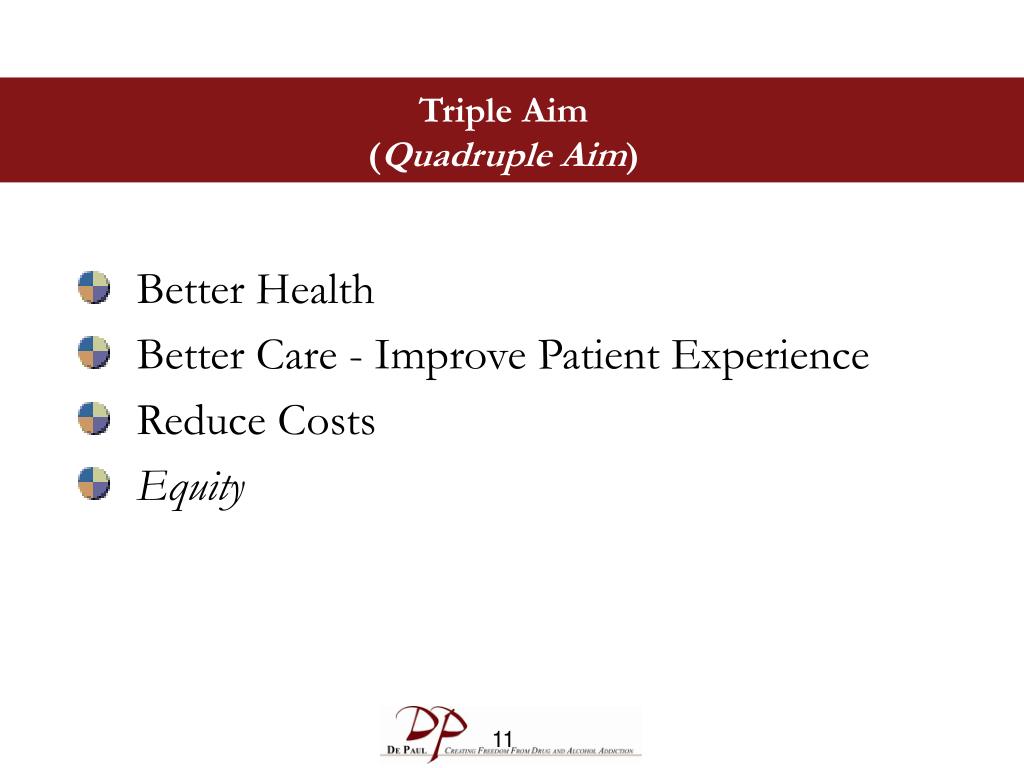

The quadruple aim bolsters the well-being of nurses, medical assistants, receptionists, and anyone else involved in providing care to patients.Īlso, it's not all about paying physicians more. All members of the healthcare team are at risk. They proposed adding a fourth dimension to the three in the triple aim: "the goal of improving the work life of health care providers, including clinicians and staff." In 2014, they published a paper in the Annals of Family Medicine titled " From Triple to Quadruple Aim: Care of the Patient Requires Care of the Provider." In it, they very effectively made the case that our ability to achieve the triple aim is jeopardized by the burnout of physicians and other healthcare providers. Improving the care of individual patients, bettering the health of populations, and lowering healthcare expenses - that covers everything, right? Not so, according to Dr. The triple aim has guided the development of many of today's initiatives to improve healthcare, including private insurers' efforts to reform payment, Medicare's accountable care organizations (ACOs), and medical groups' programs to improve quality and reduce cost. Its three dimensions are "Improving the patient experience of care (including quality and satisfaction) improving the health of populations and reducing the per capita cost of health care." Donald Berwick and the Institute for Healthcare Improvement (IHI). In case you haven't heard the term, the triple aim is a concept developed in 2007 by Dr. Not mentioning the triple aim is like a politician forgetting to end a speech with the words "God bless the United States of America." It's mentioned at least once in almost every talk or article by a healthcare leader these days.
#Triple and quadruple aim full#
After all, as Bodenheimer and Sinsky remind us, care of the patient requires care of the provider.įor more information about these guiding principles, read the full blog in Healthcare Design.You've heard about the triple aim. Planning healthcare environments with these guiding principles in mind will do much to improve the wellbeing and work life of providers, bringing us closer to realizing the Quadruple Aim. Offer access to health-promoting amenities.Provide dedicated work zones for collaboration and concentration.Facilitate eating breaks for physical and social nourishment.

Encourage and enable respite to restore energy, productivity, and sense of self.Here is some of what we have learned about the wellbeing needs of healthcare providers and staff, and how these principles can be supported through design solutions. In the course of gathering data from focus groups, journey mapping, and walking interviews with more than 100 healthcare staff and clinicians, we have identified a number of guiding principles focused on improving the wellbeing and work life of care providers in a holistic way.

The authors contend that the Triple Aim-to enhance the patient experience, improve population health, and reduce costs-will be attainable only when high rates of job burnout and dissatisfaction among care providers and staff are mitigated. Christine Sinsky, has become a clarion call to address the wellbeing needs of healthcare providers and staff. A 2014 article in the Annals of Family Medicine, titled “From Triple to Quadruple Aim: Care of the Patient Requires Care of the Provider” by Dr.


 0 kommentar(er)
0 kommentar(er)
